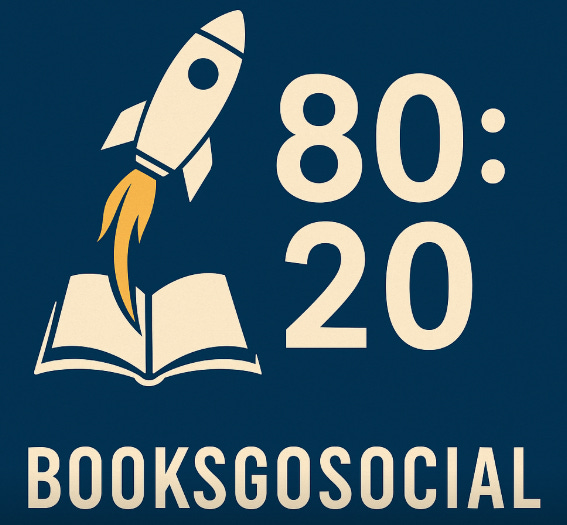This is the second post in our Pareto Principle 80:20 Book Marketing series. This post focuses on how to begin to identify multiple ways to pitch our books—an essential 80:20 book marketing activity:
Why do this at all? Because Books Deserve More Than One Pitch, More Than One Shot at the Title!
As authors we often have one fav way of describing our book/s. But in reality here’s the thing: that pitch only clicks with a fraction of our potential audience.
So how do we find the most effective pitch?
We start by identifying multiple ways to pitch our book—each designed to resonate with a different type of reader, platform, or mood.
Why multiple pitches matter:
Our Amazon blurb might focus on suspense.
A TikTok teaser could lean into a killer hook.
Our newsletter might open with a personal story.
Our Facebook ad might emphasize a genre trope.
Each version unlocks a different reader door. Together, they multiply our chances of connecting with the right readers.
Then we can rotate the pitches after identifying multiple burbs, teasers, stories and the themes that live inside our books.
Here’s suggestions for how to find best-performing pitches:
Split-test book descriptions.
Try a few variations of your Amazon description—swap the opening line, change the focus, or highlight a different character, mood, USP (unique selling point) or danger. Then track the impact on sales.Write elevator pitches for different moods.
Ask: Is this book thrilling, funny, romantic, dark, inspiring? Create 1-2 sentence versions for each mood or angle. Use them in ads, interviews, bios, or captions.Tailor to the platform.
Instagram loves aesthetics and emotions.
Amazon rewards clarity and keywords.
TikTok wants bold and mysterious.
Email readers want personal and direct.Use themes and comparisons.
Is your book like The Lincoln Lawyer or Outlander? Does it include popular themes like “broken detective” or “found family”? Those elements are gold—especially in paid ads. Readers want familiar but different and better. But don’t forget familiar. Without it the pitch won’t stand up.Listen to your readers.
Check reviews, DMs, and reader emails. What lines, moods or scenes do they highlight? What words do they use to describe your book? Their language can shape your next pitch.
And keep a “Pitch Bank”—a running doc of short descriptions, taglines, themes, and ad copy and if they worked. That means the royalties during the period you tested them. And scale up the winners. More on that soon.
Test images in Facebook & Instagram ads too. Look for ways to reflect your themes. One author I know went through 21 images and videos before finding the most effective at getting sales via Facebook ads.
In the next post, next Monday, we’ll dive into how to scale what’s working without burning out.
Want to sell more books? Learn how to use heuristic marketing tactics to pitch your book.
That’s the BGS 80:20 way.
Here’s a video I’m using to test the latest pitch for my Roman series with ads on Facebook - what themes do you think it’s using:
This is the book marketing Substack you have been waiting for.
To subscribe to this newsletter, for those who may have received this email as a trial, click below for monthly and annual options:






Yes, changing things helps. For one rom com I have a winter Christmasy cover, as there is a Christmas scene/proposal in it at the end, ( it isn't really a Christmas novel per se). The different cover helps sales Nov through Jan. Equally who'd buy a Christmas cover in June? So it goes back to a general cute cover after that.
A good tip list to spark fresh thinking of one's already published book.